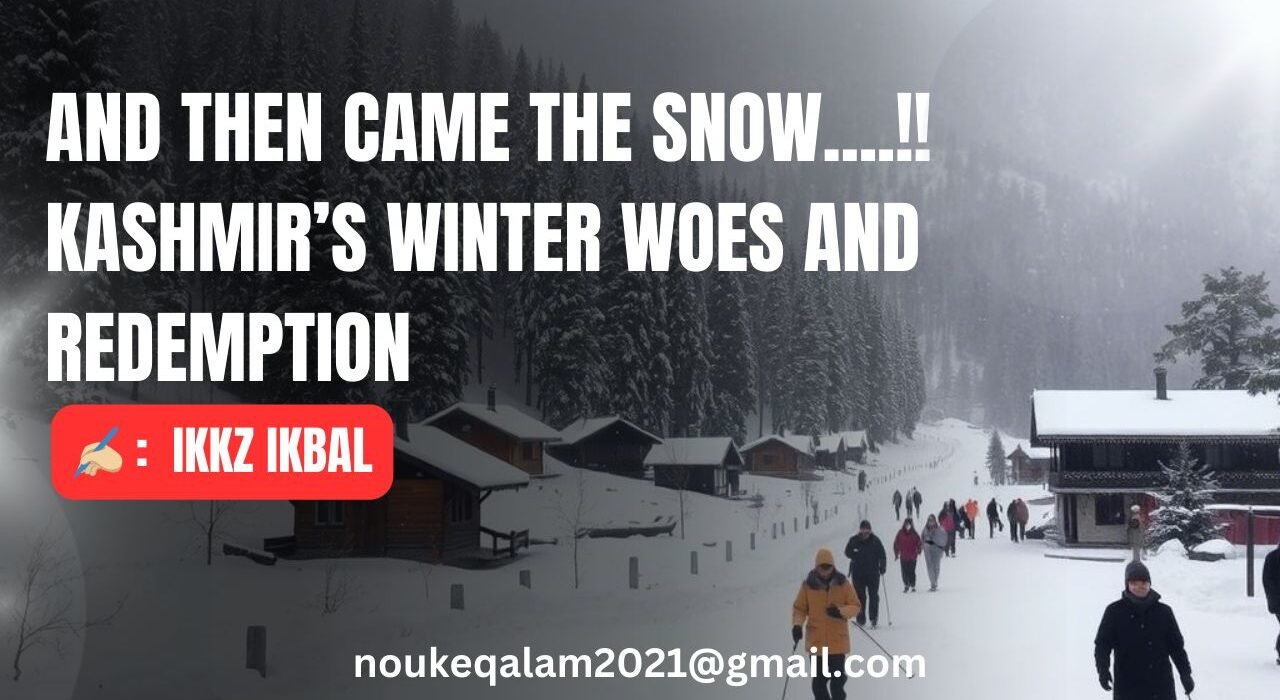For centuries, Kashmir’s winters have been synonymous with snow-laden landscapes, frozen rivers, and everything draped in white. But this year, winter arrived with an eerie silence. December, January, and even February—the heart of the harshest 40-day period, Chillai Kalan—passed without their usual icy embrace. Instead of the expected blizzards and biting cold, Kashmir witnessed bright blue skies, warm sun-soaked days, and an unusual absence of precipitation. Rivers shrank, glaciers retreated, and alarm bells rang across the Valley.
The consequences of this snowless winter loomed large. Farmers and orchardists watched anxiously as their lands thirsted for moisture. The tourism industry, which thrives on Kashmir’s winter wonderland appeal, faced dwindling bookings and disappointed visitors. Even the power supply, heavily dependent on hydroelectric projects, faced an uncertain future due to depleting water levels in reservoirs.
But just when despair seemed inevitable, nature relented. A fresh spell of rains and snowfall, late but much-needed, blanketed the Valley, bringing hope and relief. While it might not fully compensate for the months of dryness, it has provided a much-needed reprieve to the people and economy of Kashmir.
Experts attribute this drastic decline in snowfall to a combination of global climate change and reckless deforestation. Over the years, thousands of trees have been felled, stripping the land of its natural ability to hold moisture and regulate weather patterns. Forests act as nature’s reservoirs, capturing moisture and releasing it gradually to sustain rivers and groundwater. Their destruction has led to erratic weather patterns, unpredictable precipitation, and long dry spells.
“People think rainfall and snowfall only benefit farmers,” noted a senior environmentalist. “But the truth is, everything in Kashmir depends on winter precipitation—our drinking water, our irrigation, and even the electricity supply that comes from hydroelectric projects.”
The dry spell had particularly devastating effects on tourism. Ski resorts in Gulmarg, Pahalgam, and Sonamarg, usually buzzing with adventure enthusiasts and honeymooners, remained eerily quiet. Hotels reported cancellations, and local businesses suffered. The snow-covered meadows, which attract thousands of domestic and international tourists every year, remained barren, denting the industry’s earnings.
For farmers, the situation was equally grim. Kashmir’s famed apple orchards, saffron fields, and paddy lands rely heavily on winter precipitation to ensure a good yield. The lack of snow meant drier soil, lower water tables, and potential crop failures in the months ahead. “If there is no snow, there is no water in the soil. No water means no crops,” lamented a local apple grower from Sopore.
Then came the snow. The fresh snowfall has changed the landscape, quite literally and metaphorically. The barren brown hills have once again turned white, reviving hopes for a better summer ahead. Tourists have returned to the Valley, hotels are witnessing new bookings, and ski slopes are finally alive with activity. Farmers and orchardists now hope that the snow will replenish the water sources enough to sustain their crops through the coming months.
However, experts warn that this single snowfall event is not enough to undo the damage caused by the prolonged dry spell. Climate change and deforestation remain long-term threats. The fragile ecology of Kashmir demands immediate action—reforestation drives, strict conservation policies, and a shift towards sustainable practices.
Kashmir’s dependence on winter precipitation is absolute. Without sufficient snowfall, rivers run dry, crops fail, and the region’s economy suffers. If the pattern of decreasing snowfall continues, the Valley could face a severe water crisis in the years to come.
This winter has been a wake-up call. The people of Kashmir, along with policymakers and environmentalists, must take decisive steps to combat deforestation, regulate urban expansion, and adopt climate-resilient agricultural practices. Sustainable tourism should be encouraged, ensuring that visitors appreciate the natural beauty of Kashmir without contributing to its degradation.
As the Valley basks in the glow of fresh snow, it is easy to forget the fear and uncertainty of the past few months. But let this snowfall not be a distraction from the larger crisis at hand. Let it be a reminder—a final warning—that Kashmir’s winters, like its people, are resilient, but not invincible.
Note: Ikkz Ikbal has a PG in Biotechnology and is Principal Maryam Memorial Institute Pandithpora Qaziabad. He X’s @IkkzIkbal






